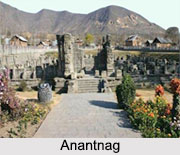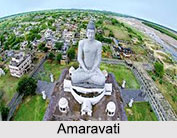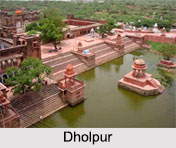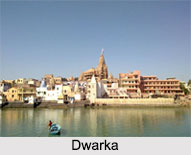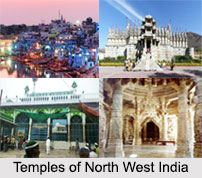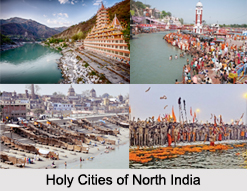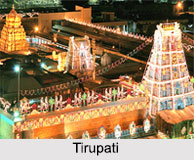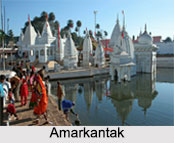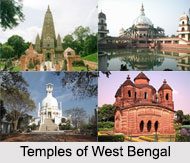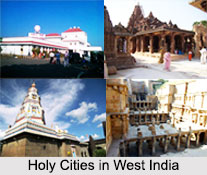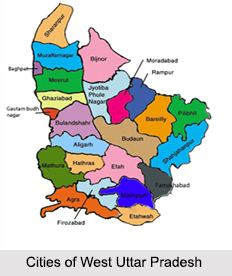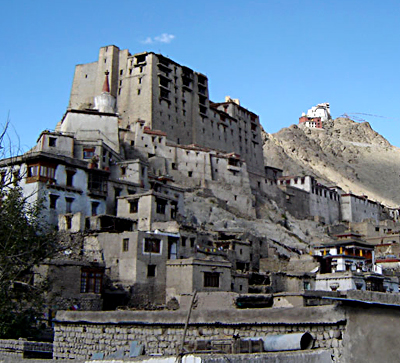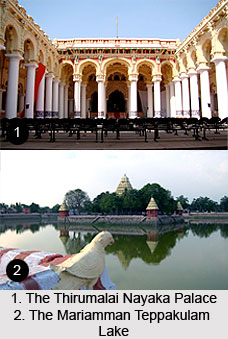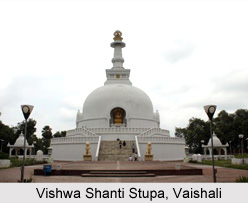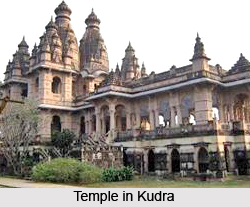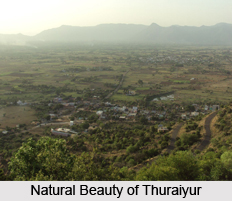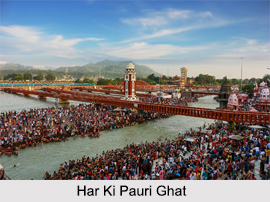Introduction
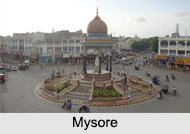 Mysore, also spelt as Mysuru is a decorated place in Southern part of India (South Indian States). The existence of Mysore can be traced from mythological history of India and later in early history and medieval history. It is said from the folk lore, Mahishasura ruled the area which is presently known as Mysore in modern Mysuru District of Karnataka.
Mysore, also spelt as Mysuru is a decorated place in Southern part of India (South Indian States). The existence of Mysore can be traced from mythological history of India and later in early history and medieval history. It is said from the folk lore, Mahishasura ruled the area which is presently known as Mysore in modern Mysuru District of Karnataka.
Location of Mysore
Mysore is located at the southwest of Bengaluru. Mysore spreads an area of 128.42 square kms which extends at the foot hills of Chamundi hills. The latitudinal and longitudinal location of Mysore is around 12.30 degree North and 76.65 degree East which has an average altitude of 770 meters or 2526 ft.
History of Mysore
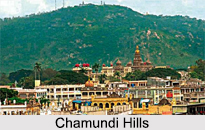 Mysore played a very significant role from the early era till the British Raj. This city continued to remain the capital of the Mysore Kingdom which was under the rule of Wodeyar dynasty. This city came under the rule of Haidar Ali and Tipu Sultan for a very short period of 40 years. According to the Hindu mythology Mysore was ruled by the famous demon Mahisha- Mahishasur who was killed by Goddess Chamunda. From that time, Mysore received its name from the legendary mythological ruler Mahishasura. The place was originally known as Mahisha or Mahishasuru. Mysuru or Mysore includes some of the popular historical monuments, forts, archaeological ruins and Mahishasuru fort which was built by Chamaraja Wodeyar III in medieval era. Mysore was the governmental centre till 1610 AD when the Wodeyars exiled the Vijayanagara governor in Shirangapatnam and shifted the capital to Shirangapatnam. Later Mysuru or Mysore came under the control of British Empire in India till India got Independence in 1947.
Mysore played a very significant role from the early era till the British Raj. This city continued to remain the capital of the Mysore Kingdom which was under the rule of Wodeyar dynasty. This city came under the rule of Haidar Ali and Tipu Sultan for a very short period of 40 years. According to the Hindu mythology Mysore was ruled by the famous demon Mahisha- Mahishasur who was killed by Goddess Chamunda. From that time, Mysore received its name from the legendary mythological ruler Mahishasura. The place was originally known as Mahisha or Mahishasuru. Mysuru or Mysore includes some of the popular historical monuments, forts, archaeological ruins and Mahishasuru fort which was built by Chamaraja Wodeyar III in medieval era. Mysore was the governmental centre till 1610 AD when the Wodeyars exiled the Vijayanagara governor in Shirangapatnam and shifted the capital to Shirangapatnam. Later Mysuru or Mysore came under the control of British Empire in India till India got Independence in 1947.
Climate of Mysore
Mysore enjoys a pleasant climate throughout the year. Summer season extends from March to June which is followed by the monsoon season in July to November. And winter season in December that continues till February. The highest degree of temperature recorded is 38.5 degree Celsius.
Demography of Mysore
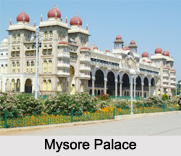 According to the Population Census in the year 2011, Mysore had a population of 887,446. Out of which 443,813 were males and 443,633 were females, thus making it the second most densely inhabited urban area in Karnataka.
According to the Population Census in the year 2011, Mysore had a population of 887,446. Out of which 443,813 were males and 443,633 were females, thus making it the second most densely inhabited urban area in Karnataka.
Economy of Mysore<
Mysore or Mysuru derives a lot of earning from tourism which is one of the main industries in Mysore. Tourism contributes heavily to the state treasury. Along with it Mysore also has some cottage industries and small scale industries which manufacture the sandalwood products, matchboxes and incenses. Along with this there are some automobile manufacturing industries and information technology companies which add to the state`s earnings.
Culture of Mysore
Culture of Mysore is rich in heritage and customs. Mysore city is known as the cultural capital of the Indian state of Karnataka. The Mysore city was capital of Wodeyar Kings who, for many centuries, ruled over the Mysore Kingdom. Wodeyars were grand patrons of music and arts and have contributed greatly to make Mysore a cultural centre. Mysore is popular for its museums, palaces and art galleries and festivals that take place in the city every year during the period of Dasara that attracts people from all over India. The city of Mysore has lent its name to famous dishes like Mysore Masala Dosa and Mysore Pak. The city is also famous for Mysore silk sari and Mysore paintings.
Art and Architecture of Mysore
Palaces of Mysore
Wodeyar Kings have played a crucial role to build few places in Mysore and this has also earned the city the sobriquet of City of Palaces.
Jaganmohan Palace
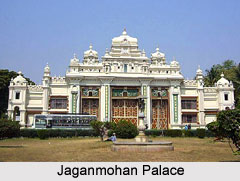 This palace was constructed in the year 1861 by Krishnaraja Wodeyar III in mostly Hindu style to serve as alternate palace for royal family. This palace also housed the royal family when the older Mysore Palace was burnt down by a fire. This palace actually has a three floor and also has stained ventilators and shutters. It has, since 1915, housed the Sri Jayachamarajendra Art Gallery. The collections that are exhibited here include paintings from the famed Travancore ruler, Raja Ravi Varma, the Russian painter Svetoslav Roerich and many paintings of the Mysore painting style. The Durbar Hall here was the place where the early convocations of the Mysore University were held. The hall also serves as an auditorium for staging cultural programmes.
This palace was constructed in the year 1861 by Krishnaraja Wodeyar III in mostly Hindu style to serve as alternate palace for royal family. This palace also housed the royal family when the older Mysore Palace was burnt down by a fire. This palace actually has a three floor and also has stained ventilators and shutters. It has, since 1915, housed the Sri Jayachamarajendra Art Gallery. The collections that are exhibited here include paintings from the famed Travancore ruler, Raja Ravi Varma, the Russian painter Svetoslav Roerich and many paintings of the Mysore painting style. The Durbar Hall here was the place where the early convocations of the Mysore University were held. The hall also serves as an auditorium for staging cultural programmes.
Jayalakshmi Vilas Mansion
This particular palace was constructed in the year 1905 by Chamaraja Wodeyar for Jayalakshmi Devi, his eldest daughter. This museum has three wings and also contains a series of twin Corinthian and Ionic columns, regal pediments and oval ventilators. This mansion was acquired by the University of Mysore to house its post-graduate campus. It was modernized in the year 2002. The main home in the palace is Kalyana Mantapa that has eight petal shaped dome with stained glass windows with a gold-plated Kalasha (tower) at the top.
Lalitha Mahal
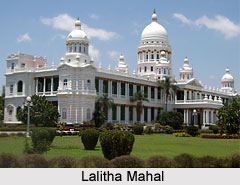 This palace, Lalitha Mahal, was built by Krishnaraja Wodeyar IV in 1921 and main architect was Mr E W Fritchley. The mansion is pure in colour and was also built in the style of Italian palazzo with twin Ionic columns and domes. It also has rambling terrace and landscaped gardens. However, this palace was converted into five star hotels belonging to the Ashok Group of Hotels. The interior of this palace contains venation marble floors, rosewood furniture and a stately balustrade staircase. The central hall in the palace contains life size portraits of the royalty, lithographs, motifs, a Belgian glass dome and carved wood shutters. An ancient elevator, still in working condition is also present.
This palace, Lalitha Mahal, was built by Krishnaraja Wodeyar IV in 1921 and main architect was Mr E W Fritchley. The mansion is pure in colour and was also built in the style of Italian palazzo with twin Ionic columns and domes. It also has rambling terrace and landscaped gardens. However, this palace was converted into five star hotels belonging to the Ashok Group of Hotels. The interior of this palace contains venation marble floors, rosewood furniture and a stately balustrade staircase. The central hall in the palace contains life size portraits of the royalty, lithographs, motifs, a Belgian glass dome and carved wood shutters. An ancient elevator, still in working condition is also present.
Rajendra Vilas
This is a palace atop the Chamundi Hill. This was conceived in the 1920s and completed in 1938-1939. This was built as a summer palace for the Wodeyar kings. This palace is currently owned by the current scion of the royal family, Srikantadatta Narasimharaja Wodeyar. There are plans to convert this into a Heritage hotel.
Cheluvamba Mansion
This particular mansion was constructed by Krishnaraja Wodeyar IV for his third daughter, Cheluvarajammanni. It now houses the CFTRI (Central Food and Technological Research Institute).
Paintings of Mysore
Mysore Painting
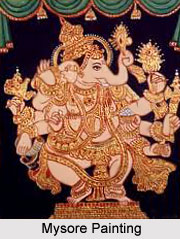 The conventional form of painting is known as Mysore painting and is an offshoot of the Vijayanagar school of Painting. As soon as the Vijayanagar Empire fell, the artists who were fully involved in the Vijayanagar Paintings were left jobless. Raja Wodeyar, Wodeyar King, rehabilitated these artists in Srirangapatna and under his patronage, a novel form of painting known as Mysore painting developed. These artists also employed by the king made full use of the locally available materials to do the paintings.
The conventional form of painting is known as Mysore painting and is an offshoot of the Vijayanagar school of Painting. As soon as the Vijayanagar Empire fell, the artists who were fully involved in the Vijayanagar Paintings were left jobless. Raja Wodeyar, Wodeyar King, rehabilitated these artists in Srirangapatna and under his patronage, a novel form of painting known as Mysore painting developed. These artists also employed by the king made full use of the locally available materials to do the paintings.
The hair of the squirrel was used as a brush by tying the hair with the silken thread and also inserting them into the narrow end of quill. A cloth spread over a wooden plank formed the painting board. Properly burnt tamarind sticks were used as a sketching charcoal. The main attraction of these paintings was the gesso work in which gold foils were pasted on appropriate regions on the painting. Gesso was used for depicting intricate designs of clothes, jewellery and architectural details. Stories from the Ramayana, Mahabharata, Bhagavata Purana and Jain epics formed the basis of these paintings. Mummadi Krishnaraja Wodeyar (Krishnaraja Wodeyar III) was instrumental in the growth of the Mysore painting form and is said to have commissioned more than 1000 portraits during his reign. Many of these paintings can still be seen on the walls of the Jaganmohan Palace at Mysore.
Ganjifa Art
Ganjifa or Ganjeefa was a well-known card game in prehistoric India. This was widely played during the Mughal Period. And now, Ganjifa is known for its art work on the cards than the game itself.
Crafts of Mysore
Crafts of Mysore are very popular across India. The popular crafts of Mysore are Rosewood Inlay work and Mysore silk saree.
Rosewood Inlay Work
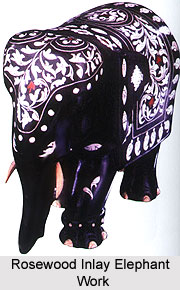 These are intricate designs made on wooden structures. And the work is done in various stages. The very first step of the process is to draw and design the patterns and images on the rosewood. After that the rosewood is cut into proper size and shape by carpentry. The motifs that have to be inlaid are then carefully hand-cut to shape. The areas where the motifs have to be inlaid on the rosewood are carefully scooped out. Next the motifs are inlaid and fixed. The wood is then smoothened using sandpaper and polished to give a bright look.
These are intricate designs made on wooden structures. And the work is done in various stages. The very first step of the process is to draw and design the patterns and images on the rosewood. After that the rosewood is cut into proper size and shape by carpentry. The motifs that have to be inlaid are then carefully hand-cut to shape. The areas where the motifs have to be inlaid on the rosewood are carefully scooped out. Next the motifs are inlaid and fixed. The wood is then smoothened using sandpaper and polished to give a bright look.
Mysore Silk Saree
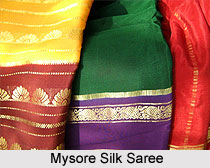 Mysore as a city is a popular for feminine saree. Silk is a trademark in the city, and Karnataka Silk Industries Corporation is a popular manufacturing unit. These saree uses 100% pure gold zari. Mysore silk sarees are also undergoing an innovating change with the use of kasuti embroidery, thickly woven pallus (the part of the saree worn over the shoulder), bandhini techniques and new colours like lilac, coffee-brown and elephant-grey
Mysore as a city is a popular for feminine saree. Silk is a trademark in the city, and Karnataka Silk Industries Corporation is a popular manufacturing unit. These saree uses 100% pure gold zari. Mysore silk sarees are also undergoing an innovating change with the use of kasuti embroidery, thickly woven pallus (the part of the saree worn over the shoulder), bandhini techniques and new colours like lilac, coffee-brown and elephant-grey
Costumes of Mysore
For majority of people in Mysore, the attire resembles those of the rest of Southern part of India. Lungi is popular among men at home where they wear shirts and pants outdoors. Saree and Salwar Kameez are popularly worn by females. For formal occasions like marriage, females mostly prefer to wear a silk saree with gold jewellery. Western attire like jeans, Bermuda shorts and skirts find lot of favour with the younger generation.
Music of Mysore
Mysore Nagaraj and Dr. Mysore Manjunath are globally famous violin maestros from the city of Mysore. Dr. Mysore Manjunath and Mysore Nagaraj are the proud disciples and sons of veteran musician Sangita Vidya Nidhi Vidwan Mahadevappa. The brothers are extremely popular and their outstanding musicianship and astounding virtuosity made them one of the best violin players in the contemporary music world. They symbolize the genre of Carnatic Music and have also worked together with many musicians of world class stature in countless number of nations at important musical festivals and seminars. Dr. Mysore Manjunath also has the recognition of representing India at a variety of top venues, including global violin conference and world music festival held in Chicago. Countless awards and honours have been credited to these wonder musicians.
Festivals of Mysore
Festival of Mysore is celebrated with all the pomp and galore. One of the popular names for Dasara in the state of Karnataka is Nadahabba (state festivals). Often, it is also known as Navaratri (nine nights) and is a 10-day festival with the last day being Vijayadashami, the most auspicious day of Dasara, which generally falls in the month of September and October according to English calendar.
Going little into the history of this festival it can be seen that it was first celebrated by Wodeyar King, Raja Wodeyar I in 1610. The Mysore Palace, during Dasara is lit up for 10 days. The celebrations start with Wodeyar royal couple performing a special puja to Goddess Chamundeshwari in the Chamundi Temple located on the top of Chamundi Hill at Mysore. This would also be followed by royal assembly. Kings wore conventional Mysore Peta as headgear during the time of Durbar (court of Indian or kings of princely states of India) or in a ceremonial procession during the Dassara celebrations.
It was in the year 1805, during reign of Krishnaraja Wodeyar III when the king started the convention of having special durbar in Mysore Palace during Dasara that was attended by members of the royal family, special invitees, officials and the masses. The King and the men attending the court of the King wore the traditional dresses known as Durbar Dress that comprised a black long coat with white trouser and compulsory Mysore Peta. The convention has sustained even now with present scion of Wodeyar family, Srikantadatta Narasimharaja Wodeyar holding a private durbar during Dasara. The ninth day of Dasara is known as Mahanavami and is also spent as auspicious day on which the royal sword is worshipped and is taken on procession involving elephants, horses and camels.
One of the major attractions during the Dasara is the exhibition of Dasara that is held in the exhibition grounds opposite to the Mysore Palace. This exhibition that begins with Dasara goes on till December. On 10th day of Dasara many dance and music concerts are held in auditoriums around Mysore city. Dance groups and musicians from across India are invited to perform on this occasion. Another attraction during Dasara is the Kusti Spardhe (wrestling-bout) which attracts wrestlers from all around India.
Cuisine of Mysore
 To a great extent the cuisine of Mysore is similar to the Udupi cuisine. Rice is staple food used in cooking and many other spices are also used. For breakfast the food generally include dishes made of rice like idli and dosa. Another popular breakfast item is Vada. Some of the other dishes for breakfast include shavige bath (spicy dish made of vermicelli), rava idli, oggarane avalakki (seasoned beaten rice), Pongal and Poori.
To a great extent the cuisine of Mysore is similar to the Udupi cuisine. Rice is staple food used in cooking and many other spices are also used. For breakfast the food generally include dishes made of rice like idli and dosa. Another popular breakfast item is Vada. Some of the other dishes for breakfast include shavige bath (spicy dish made of vermicelli), rava idli, oggarane avalakki (seasoned beaten rice), Pongal and Poori.
Generally the lunch and dinner includes steamed rice, chutney, sambar, pickle, curry, gojju (a sweet curry), rasam, papad and curds. Some of the popular rice based dishes are Bisi bele bath (a spicy rice preparation with vegetables), Vangi Baath (rice mixed with Brinjal curry), chitranna (rice mixed with seasoning, turmeric and lemon juice or raw mango scrapes) and Puliyogare. Nowadays, Chapati is another lunch item that is preferred by people. In case of formal events like marriages, the food is served on a plantain leaf and in most cases includes items like sweets and Kosambari apart from the ones mentioned above.
Apart from the above mentioned dishes, sweets like rave unde (sweet balls made of semolina and coconut scrapes), ladoo, rice payasam, Mysore Pak and jalebi, also play a crucial role in Mysore cuisine. It is usual to eat adike (arecanut) with betel leaf after the lunch/dinner. At home, coffee is a preferred beverage. Among snacks which are prevalent are chakkuli, khara mandakki (spicy puffed rice), churmuri and kodubale (a doughnut shaped spicy snack made of fried semolina). In the last few years, chaat, pizzas and items belonging to Indian Chinese cuisine have become popular mostly with the younger generation. Mysore has also lent its name to the sweet-dish Mysore Pak and the Mysore Masala Dosa.
Tourism in Mysore
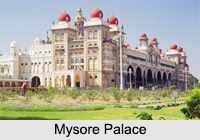 Mysore is the second largest city of Karnataka. It is the headquarters of the district and is situated about 139 km west of Bangalore. It was ruled by the Hoysalas and Chalukyas, who made wonderful temples here. Apart from these beautiful temples, Mysore has lots of beautiful places to visit. Some of them are given here:
Mysore is the second largest city of Karnataka. It is the headquarters of the district and is situated about 139 km west of Bangalore. It was ruled by the Hoysalas and Chalukyas, who made wonderful temples here. Apart from these beautiful temples, Mysore has lots of beautiful places to visit. Some of them are given here:
Mysore Zoo
The zoo at Mysore is known as Chamarajendra Zoological Gardens. It attracts a number of visitors. There is rare collection of animals and birds of the world in this zoo. It covers an area of over 37 hectares of green land. There is a separate enclosure for reptiles too. Friday is the weekly holiday. The visitors are allowed to enter from 08:00 hrs to 11:30 hrs and 14:00 hrs to 18:00 hrs. A minimum entrance fee of Rs. 1 is needed for the adults and 0.50 for the children.
Chamaraja Technical Institute
The exhibition hall of this institute contains some exquisite specimens of local artwork. The chief attractions here are the ivory and sandalwood carvings and metallic images. This institute also provides training in various crafts and manufactures excellent articles of rose wood and sandalwood.
The Mysore Palace
This wonderful palace was built in 1897. The courtyard of the palace contains a gorgeous garden and exclusively architectural temples dedicated to Goddess Gayatri, Goddess Buvaneswari, Lord Gopalakrishna, Navagraha, Lord Sri Varaha and Lord Trinayaneswara. The structure of the palace is styled on the Hoysala School of architecture. The exquisite art and paintings, ancient swords, crystal furniture and other historical items can be seen inside the palace.
The visitors need to keep their shoes outside. Boxes and bags or any other personal belongings are also not allowed inside. Photography is prohibited and the visitors are allowed to enter from 10:00 hrs to 17:00 hrs. A minimum entrance fees Rs.2 is taken.
Rail Museum of Mysore
It is situated near the Mysore railway station. This is a small but exciting railway museum comprising a good collection of old coaches which have been put out of track by their modern rivals. A special attraction here is the queen`s royal saloon. Visiting hours are from 10.00 hrs to 13:00 hrs and 15:00 hrs to 17:00 hrs.
The Brindavan Gardens and Krishnaraja Sagar Dam
This is a picturesque garden and is laid out in beautiful cascade. The garden has enchanting fountains, musical fountains and slides and swings for children. The fountains are provided with special lights. In the evening, when the garden lights are lit, it looks very beautiful. This beautiful sight can be enjoyed between 19:00 hrs and 19.55 hrs on week days and between 19:00 hrs and 20:55 hrs on Sundays.
The Krishnaraja Sagar Dam is built across the beautiful Cauvery River, which extends to 3000 m in length and 40 m in width. This place is suitable for pleasure boating as it spreads over an expanse of 130 sq. km. It took 20 long years to construct this huge dam of Mysore. This dam takes care of the water supply to the Simsa Hydroelectric Power Project at Sivasamudram.
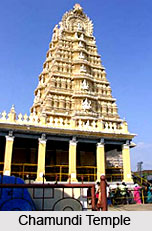
It is situated 22 km from the Mysore city. The visitors need to pay the entrance fees of Rs. 5.
Chamundi Hill of Mysore
There is a beautiful temple built by Krishnaraja Wodeyar III in this hill of Mysore. It is situated at 1095-meter altitude. Goddess Chamundeswary, who killed the demon Mahishasur, is the presiding deity of this temple. The gopuram or the portal tower of the temple is 7 storeyed and 40 m in height. A panoramic view of the beauties below can be had from the vantage points in the temple.
Mahabala Temple of Mysore
This temple is situated close to the beautiful Chamundi Hills. It was built during the 10th century. It was earlier known as `Marbala Betta`. On the way to the temple, the visitors can see a huge monolithic Nandi. It stands 16 ft x 2 5 ft in height with an ornamental chain around the neck with a bell attached to it.
Varahaswamy Temple of temple of Mysore
This temple is dedicated to `Lord Varaha`, an incarnation of Lord Vishnu. The grand Hoysala type architecture is reflected in this temple. There are excellent sculptural works and inscriptions.
Sri Lakshmi Narayana Swamy Temple of Mysore
This temple is dedicated to Lord Lakshmi Narayana, a variation of Lord Vishnu. It is believed to be the oldest in the city.
Trineswara Temple of Mysore
This is an ancient temple built in Dravidian style of architecture. It is dedicated to Lord Shiva. It is situated facing the Mysore palace.
Prasanna Krishna Swamy Temple of Mysore
It is situated on the south of the main palace. This temple is dedicated to Lord Krishna, an incarnation of Lord Vishnu. It was built in the year 1825 by Krishnaraja Wodeyar III.
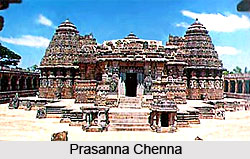 The Lake of Thousand Lights of Mysore
The Lake of Thousand Lights of Mysore
The lake got its name so because thousand lights are lit during the `Teppotsava` or the ceremonial sailing of the `Holy Raft`. This festival with a thousand light illuminations attracts lots of visitors to experience the grandeur. This festival is celebrated on the full moon day during the Dasara season in the beautiful evening with the Sun filling the sky with crimson. This lake is situated on the east of Chamundi hills.
Somnathpur in Mysore
It is situated 26 km from Srirangapatnam and 40 km from Mysore. There are three ancient wonderful temples in a complex called Prasanna Chenna Keshab here. Somnath Dhandanayaka, the commander in the army of Hoysala Narasimha III built these three temples known as `Trikuta` on an elevated star-shaped base in 1268. The exterior walls of this triple-shrine are decorated with reliefs of scenes from the great epics and life of Hoysala Kings. The Cauvery and Kabini rivers meet here.
Talkad in Mysore
This place is located about 30 km southeast of Somnathpur on the way to Sivasamudram. This historic place is now the headquarters of the Taluk. Earlier, it was the ancient capital of the Ganga and the Chola Kings. The `Pancha Linga` or five Lingas comprising the ones at different Siva Temples here are very well known here. A grand festival called `Uatra` is celebrated once in 12 years in honour of these five Lingas. The devotees can have the `darshan` of all the 5 Lingas during this festival. The Dravidian style is followed while building these temples. There are as many as 6 famous temples here.
There is an ancient temple in Talkad, dedicated to `Lord Vaideeswara`, the healer of all diseases who is a variation of Lord Siva. This temple is a grand granite structure of the 14th century. One can see the reliefs of Lord Siva in various postures here.
Kesava Temple of Mysore
The presiding deity of this ancient temple is Lord Kesava, one of the forms of Lord Vishnu. The courtyard of this temple measures 215 ft in length and 177 ft in breadth. The visitors can have a glance of the rows of elegantly carved reliefs of various deities such as Natya Ganapathi, Lord Ganesa in a dancing posture, Natya Saraswathy, Lord Siva, Varaha, one of the incarnations of Lord Vishnu, Indra. Various mythical events are also depicted here. The outer walls of this temple are ornately sculptured and the panels bear the sign-manuals of great sculptors like Baleya, Chaudeya, Mattitamma Chamaya, Bharmaya, Yalasamayya and Nanjayya.
Jaganmohan Art Gallery of Mysore
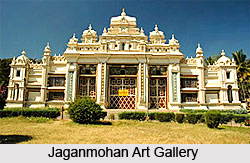 This art gallery contains beautiful portraits displaying eminent historic personalities and the events in the history of Mysore. The south enclosure in the ground floor has the nostalgic things of the kings of the olden times. One of the stunning carvings here is that of `Dasavathara` or the `ten incarnations of Lord Vishnu` on single grains of rice. This gallery is known as the Chamarajendra Art Gallery. Some exquisite articles of 1861, made for the special occasion of Maharaja Krishnaraja Wodeyar`s wedding can be seen here. The ageless paintings of the legend Raja Ravi Varma graciously fill up a huge hall. There is also a good collection of musical instruments on display here. There is also big imposing clock in this gallery, which attracts lots of tourists here.
This art gallery contains beautiful portraits displaying eminent historic personalities and the events in the history of Mysore. The south enclosure in the ground floor has the nostalgic things of the kings of the olden times. One of the stunning carvings here is that of `Dasavathara` or the `ten incarnations of Lord Vishnu` on single grains of rice. This gallery is known as the Chamarajendra Art Gallery. Some exquisite articles of 1861, made for the special occasion of Maharaja Krishnaraja Wodeyar`s wedding can be seen here. The ageless paintings of the legend Raja Ravi Varma graciously fill up a huge hall. There is also a good collection of musical instruments on display here. There is also big imposing clock in this gallery, which attracts lots of tourists here.
Mahadeswara Betta
This is a picturesque hill resort near the mighty Eastern Ghats. It is about 142 km from Mysore. This is the favourite spot of thousands of tourists who come here to get carried away in the natural beauty. Good accommodation facilities are available.
Lalitha Mahal Palace
This beautiful palace was the residence of the royal family. It is situated on the highest point in the city. It offers a panoramic view of the magnificent city and has been converted into a posh hotel now. This is one of the most visited tourist places of Mysore.
Lakes in Mysore
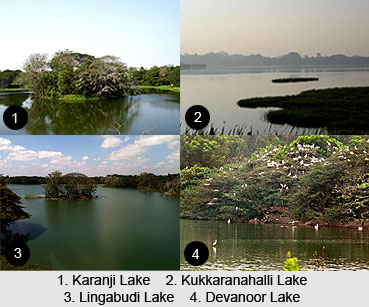 Lakes in Mysore encompass the diverse natural lakes that attract the itinerant birds. For this the tourists from all parts of the world come and visit the place. Though Mysore has developed into a modern city, the city still moves at a gentle, unhurried and leisurely pace. Mysore has a good green cover and has a few lakes that add to the attractiveness and tranquillity of the metropolis. These natural lakes are accepted picnic spots and are frequented by nature lovers as they attract a number of migratory birds. The area around these lakes is lush green and therefore a good place to relax and rest after a hectic day`s work.
Lakes in Mysore encompass the diverse natural lakes that attract the itinerant birds. For this the tourists from all parts of the world come and visit the place. Though Mysore has developed into a modern city, the city still moves at a gentle, unhurried and leisurely pace. Mysore has a good green cover and has a few lakes that add to the attractiveness and tranquillity of the metropolis. These natural lakes are accepted picnic spots and are frequented by nature lovers as they attract a number of migratory birds. The area around these lakes is lush green and therefore a good place to relax and rest after a hectic day`s work.
Kukkaranahalli Lake
Kukkaranahalli Lake is located in the middle of Manasagangothri, the Mysore University campus. This beautiful and placid lake is visited by a variety of migratory birds during winter. During the winters this lake attracts a lot of bird watchers, who come observe and enjoy the birds. Kukkaranahalli Lake provides boating facilities at nominal rates.
Lingabudi Lake
Lingabudi Lakeis in Sriramapura and is about 8km from the centre of the Mysore, the city famous for Mysore Palace. This picturesque lake also attracts plentiful types of migratory birds. The lake has a beautiful lush green park beside it and the entire sight that is presented is one that sooths the mind and soul. There are a number of buses to this lake from the city bus stand. This place is a favourite haunt of nature lovers of the city.
Karanji Lake
Karanji Lake is located at the bottom of the Chamundi hills and is close to the center of the city. This lake is spread over 90 acres and is home to more than 90 species of resident and migratory birds. The lake also has India`s largest walkthrough aviary. The lake has boating facilities that are available on all days except Tuesday. On the banks of the Karanji lake is the Regional Museum of Natural History. With the Chamundi hills as a backdrop makes the lake look picture perfect. The lake and its surroundings allow one to appreciate nature and the Regional Museum that is adjacent to the lake, will help one increase one knowledge about the natural environment in South India and will help one understand the importance of conservation of nature. The lake has a bund on which one can take refreshing walk.
Folk Art of Mysore
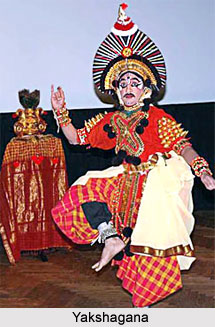 Folk art of Mysore consists of rich traditional and conventional art forms. Various branches of folk art like singing, drama, dance and puppet shows are popular in the rural parts of Indian state of Karnataka. On diverse festivals, specially during Dasara these artistes visit city of Mysore and perform. In the ancient days, they performed before the King, but in the present times they perform on the streets of Mysore or in specially designated areas during Dasara. Presentation of folk art by popular folk groups of the state has become an established and regular part of the Dasara celebrations.
Folk art of Mysore consists of rich traditional and conventional art forms. Various branches of folk art like singing, drama, dance and puppet shows are popular in the rural parts of Indian state of Karnataka. On diverse festivals, specially during Dasara these artistes visit city of Mysore and perform. In the ancient days, they performed before the King, but in the present times they perform on the streets of Mysore or in specially designated areas during Dasara. Presentation of folk art by popular folk groups of the state has become an established and regular part of the Dasara celebrations.
These folk artistes form part of the famous Dasara procession as well. Bessu Kamsale, Somanakunitha and Yaskshagana the popular folk art of Karnataka form an integral part of the Dasara celebrations and the procession. Beesu Kamasale has been recognized as a leading folk art of India and many leading groups have taken part in national and international cultural festivals. Yakashgana is a nightlong stage play, where the actors enact episodes from the Ramayana and Mahabharata throughout the night.
This folk art is especially popularly in Dakshina Kannada and Uttara Kannada districts of Karnataka are performed in Mysore. Folk art or indigenous art is an integral part of rural life and is handed down from generation to generation by word of mouth. Recognizing its importance, University of Mysore has set up a museum of Folk arts to collect artefacts related to the different folk arts in Karnataka. The University has also introduced a course in Folk arts at the level of Masters Degree.
Folk Theatre of Mysore
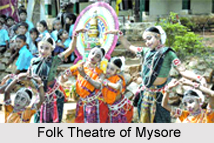 Folk theatre of Mysore expresses the best possible dramatic dances of the region. Among the dramatic dances of pre-integrated Mysore, Rangada Kunita, Nandikol Kunita, Vira Makkala Kunita, Virabhadrana Kunita, Garudi Bombe, Koldta and Mari Kunita are prominent. Among them the Kolata is the only community dance that has a group of chorus singers which resembles the chorus party of Bayalata.
Folk theatre of Mysore expresses the best possible dramatic dances of the region. Among the dramatic dances of pre-integrated Mysore, Rangada Kunita, Nandikol Kunita, Vira Makkala Kunita, Virabhadrana Kunita, Garudi Bombe, Koldta and Mari Kunita are prominent. Among them the Kolata is the only community dance that has a group of chorus singers which resembles the chorus party of Bayalata.
Virabhadrana Kunita
A colourful make-up and imposing costumes is the speciality of Virabhadrana Kunita, where the impersonator of Virabhadra with his red plait of hair, crown and bead necklaces receives devotion from his followers and dances vigorously, shouting songs and stories in praise of God Virabhadra. The beating-drum accompanies him as in all the other dramatic dances. The only folk mode which uses masks is Vira Makkala Kunita in which three or four performers put on masks that bear glaring expressions of pride, joy or valour and dance like warrior soldiers.
Garudi Bombe
Garudi Bombe is a huge bamboo structure in human form usually twelve feet in height, painted and dressed up as a man and woman. Such huge human figures which are light in weight are borne by individual performers who dance to the beating drum. Others are mostly community dances and remain dramatic because of their special costumes, music in chorus, dance in varying rhythms and symbolic gesture. In every dance it is "the sheer excitement of rhythm that caught their (performers) simple imagination and they were given that joy of their own strength and movement, the joy of creation. These ritual dances are essentially dramatic. The actor experiences a state of self-abandon and gets the joy and thrill of creating something in them, which is other than himself of communicating it to the audience and of dedicating the performance to Gods. In spite of the absence of the spoken word, these performances have the fundamentals of the folk theatre in their dance, music and gesture; but yet, they cannot assume the role of drama as they do not mean entertainment but aim at fulfilling a purpose or a commitment to the supernatural powers. In fact, the spectator himself is a performer in the majority of them. Yet, the dramatic dances, even without a regular theme, prose dialogues or organised method of presentation, do fulfil the essential purpose of the theatre by rousing a sentiment and creating a dreamland.
Professional Theatre of Mysore
Professional Theatre of Mysore began to improve a great deal in the nineteenth century and many troupes began to come to the fore. The times were different. The challenge of the Marathi stage was absent there. The professional stage of old Mysore was gradually evolved out of the court theatre on one hand and the folk theatre on the other.
Beginning of Professional Theatre of Mysore
The Mysore palace had inherited a keen interest in drama from the court of Vijayanagar Empire, and kept up a tradition of extending patronage to it. As early as in 1826, the palace had its own dramatic troupe, but this was obviously the Bidarada Dashavatara Mela, the Yaksagana party of the palace, maintained from 1812 or even earlier. It staged the traditional Yaksagana or Bhagavatara Ata and was not a dramatic troupe in the modern sense of the term. It was a happy story of court patronage extended to a folk mode. Any tangible result with regard to the professional stage in Mysore was achieved after the year 1870 when the Marathi and Parse theatre troupes visited Mysore.
The Sangli Company (originally of Vishnupant Bhave ) under the leadership of Mahadevabhat paid a visit to Mysore in 1876-77 and staged mythological plays at the palace in the presence of the Maharaja, Chamarajendra Wodeyar. Learning of the success of the Sanglikar troupe, the Victoria Parsi Company paid a visit to Mysore the next year and staged Indra Sabha and Gulebkavali, making them memorable with dazzling costumes, settings and curtains. These performances, with lady artists taking part on the stage, stunned the people who were used to witnessing only the Dasavatara plays. More than anything, the wonder was the curtains that rolled up and down automatically. People never understood the language of the plays but still, came in large numbers to see the miracle performed by the curtain. These visiting troupes opened the eyes of the local people to the possibilities of establishing their own stage, utilising the histrionic talent and material resources of the region.
Contribution of Palace Company to Professional Theatre in Mysore
In the year 1880, Shri Chamarajendra Wodeyar instructed the students of the Royal School (attached to the palace) to try theatrical experiments, and so, they staged the play Prahlada. Though in Marathi, the play was very much relished as it was entirely different from the usual Dasavatarada ata. Later, the encouraged students staged a play in English entitled Finished Apartments. C. Rangacharlu, the then Dewan of Mysore, who witnessed the performances by the students of the Royal School, saw the advantages of developing a local stage. With the permission of the Maharaja, he instructed the court poets Basavappa Sastri, Sosale Ayya Sastri, Jayarayacharya and others, each to write out a play in Kannada. An early and fruitful result was the Kannada rendering of Sakuntala by Basavappa Sastri. The Dewan, himself a scholar in Sanskrit was very happy at the translation and soon the play was rehearsed with artists drawn from the Royal school.1 It was carefully rehearsed under the supervision of the Head-master B. Mallappa (checking up the pronunciation of words and also acting), Asthana Vidwan Sadasivarao and Subbanna (training the artists in Music) and R. Raghunatharao (general supervision of production). The troupe was called Sakuntala Karnataka Natak Sabha as it was the first troupe to stage the Kannada version of the immortal play of Kalidasa.2 After rigorous rehearsals, the play was first staged in the Palace in November, 1881, and the talented troupe consisting of Lakshmipati Sastri (Sakuntala ), M. D. Subbanna (Dusyanta), Giribhattara Tammayya (Kanva) and Devaraj Urs (Vidusaka) was richly honoured for its triumphant success. The show was put up for the public in the specially erected stage at Kalyani Maidan in December 1881. People for the first time saw the marvel of a Kannada play in such dazzling settings and costume. The miracle was performed by the rolling-up curtain in the same way as it did on the Parse stage. This great success inspired the troupe to move to Bangalore to stage public shows early in 1882. The Palace Company earned a great reputation, and as a token of gratitude to the King, who was responsible to bring it into being, the troupe re-named itself as Sri Chamarajendra Kamatak Nataka Sabha in 1882.
On the instructions of the Maharaja who desired that well known English plays also should be translated into Kannada. There were a lot of things happening in the Kannada theatre circuit. The main roles like Shurasena in Shurasena Charitre, Ramavarma in Ramavarma-Lilavati and Aswathama in Venisamhara were played by Certain Ramarao, and roles like Dushyanta, Udayana and Manmatha by M. D. Subbanna while the talented Lakshmipati Sastri played the leading female roles.
In the year 1884, Bidarada Krishnappa, a prominent court musician was put in charge of rehearsals, and H. Lingaraja Urs, the Darbar Bhakshi, in charge of general administration. Shri Krishnappa collected the cream of the talent available in Mysore, and in 1889, secured the services of Mandyam Rangacharya who was already well known as a great actor, Puttari Sastri who later excelled himself in humorous roles and also Janjuti Seshagirirao, a well trained musician having considerable histrionic ability. This talented group, guided by Bidarada Krishnappa, marked the inauguration of the golden era of the professional stage in Mysore.
The greatest of royal gifts to the theatre of Karnataka was a series of Kannada plays starting with Sakuntala. The year 1880 marked the age of translation in Mysore and from then, at the royal command, learned pundits of the Court set themselves at the task of rendering into Kannada, well known Sanskrit and English plays. Many a Sanskrit scholar who was not initially connected with the palace like Bellave Narahari Sastri, Tirumala Srinivasa Iyengar, Panyam Sundara Sastri and N. Ananthanarayana Sastri, took the trend and contributed to the treasure of Kannada dramatic literature.
The theatre was then firmly established in Mysore essentially by the interest and encouragement given to it by the Maharaja Sri Chamarajendra Wodeyar. Later, the dismissal of Palace Company actually adversely affected the theatrical circle of the state. Disbanded artists joined together under the leadership of N. Subbanna, a veteran actor of the Palace Company and revived the Sakuntala Karnataka Nataka Sabha, late in 1917. Old plays were again picked up, rehearsed by the re-shuffled troupe and were staged with success in Bengaluru and Bellary. The troupe returned to Mysore in 1918 and went defunct owing to disagreement among its members. The frustrated Subbanna and B. Rachappa "retired" from the stage, but within a year, in 1919, they were harnessed again by their admiring friends who started a new troupe under the title Sri Chamundeswari Karnataka Nataka Sabha.
Monuments Of Mysore
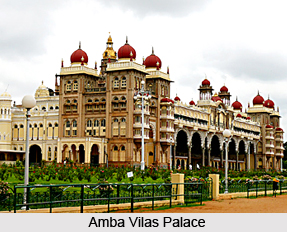 Mysore is situated about 138 km from Bengaluru and lies in a valley formed by two ridges. Steeped in history, the city speaks of the glory and grandeur of the Wadiyars as seen in the magnificent palaces, imposing buildings, sacred temples and beautifully laid out gardens. Haunted by the pervasive aroma of sandalwood and incense, the city is well maintained with wide, spacious streets, numerous parks and a high standard of visual amenity. Under the Wadiyar family Bangalore was developed as the administrative centre and Mysore became the focus for state spectacles.
Mysore is situated about 138 km from Bengaluru and lies in a valley formed by two ridges. Steeped in history, the city speaks of the glory and grandeur of the Wadiyars as seen in the magnificent palaces, imposing buildings, sacred temples and beautifully laid out gardens. Haunted by the pervasive aroma of sandalwood and incense, the city is well maintained with wide, spacious streets, numerous parks and a high standard of visual amenity. Under the Wadiyar family Bangalore was developed as the administrative centre and Mysore became the focus for state spectacles.
Modern Mysore is not particularly old; the entire town was leveled by Tipu Sultan in 1793 in order to build a new city. The old palace was reconstructed in the early 19th century along the lines of its predecessor, but this was never successful. In February 1897 it was severely damaged by fire. Today the centre of the city is dominated by the Amba Vilas Palace, which stands within the old Fort.
A number of historical as well as religious monuments are found in abundance in the city of Mysore.
Historical Monuments in Mysore
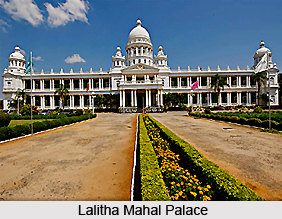 Mysore Palace is the most attractive monument in Mysore. Also known as the Amba Vilas Palace, it is located in the heart of the city at Mirza Road. It was the residence of the Wodeyar Maharajahs of the Mysore state. The original palace was built of wood and got burnt down in 1897.It was rebuilt for the twenty fourth Wodeyar Raja in 1912.The new Amba Vilas was designed by Henry Irwin, the versatile architect of the Viceregal Lodge, Simla.
Mysore Palace is the most attractive monument in Mysore. Also known as the Amba Vilas Palace, it is located in the heart of the city at Mirza Road. It was the residence of the Wodeyar Maharajahs of the Mysore state. The original palace was built of wood and got burnt down in 1897.It was rebuilt for the twenty fourth Wodeyar Raja in 1912.The new Amba Vilas was designed by Henry Irwin, the versatile architect of the Viceregal Lodge, Simla.
It is a glorious construction in the Indo Saracenic style made of grey granite dominated by a five-storey minaret with a gilded dome. The building has a series of square towers with arches that are covered by domes.
The palace is built around a courtyard. It faces a large square, which is enclosed by ornamental walls and triumphal gateways. To the east is the Elephant Gate, 20 m high. On the north side are the armory, library, lifts and staircases, above which he the music room, ladies` drawing-room and bedrooms. On the west side of the inner courtyard lies what remains of the old palace of 1800 and the zenana. To the south is the beautiful peacock marriage pavilion and beyond, on the second floor, the great Durbar Hall. The Peacock Pavilion or Marriage Pavilion is octagonal in plan, with stained glass from Glasgow and beautiful chandeliers from Czechoslovakia. There is also a dome carried on triple iron pillars. A purdah gallery encircles the hall. The floor is enriched with elaborate geometric patterns.
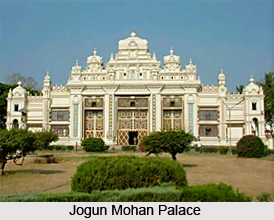 The Durbar Hall is one of the most exuberant rooms in India, a blaze of colour and sinuous forms. On the west wall are some decorative pictures from the Hindu epics painted by Ravi Varma and Raja Varma of Travancore. Between the pillars is fine Agra inlay work in jacinth and jasper, carnelian and carbuncle, amber and lapis lazuli. The ceiling is made of teakwood, enriched with spectacular stained glass. Every door has different details, which repay close inspection. One panel depicts the tiny Krishna kissing his baby toe. The throne, originally of fig wood overlaid with ivory but now of gold and silver, is remarkable. According to palace legend, it may have been the ancient throne of the Pandus.
The Durbar Hall is one of the most exuberant rooms in India, a blaze of colour and sinuous forms. On the west wall are some decorative pictures from the Hindu epics painted by Ravi Varma and Raja Varma of Travancore. Between the pillars is fine Agra inlay work in jacinth and jasper, carnelian and carbuncle, amber and lapis lazuli. The ceiling is made of teakwood, enriched with spectacular stained glass. Every door has different details, which repay close inspection. One panel depicts the tiny Krishna kissing his baby toe. The throne, originally of fig wood overlaid with ivory but now of gold and silver, is remarkable. According to palace legend, it may have been the ancient throne of the Pandus.
The Armory has a collection of over 3,000 weapons and several `Tiger`s claws`, fearful iron talons used to tear an adversary to pieces. In the inner courtyard are eight enormous bronze tigers by Robert William Colton, RA. The Music Room has elaborate European plaster-work and furniture.
Immediately to the West of this lies the Jogun Mohan Palace. This palace is in two parts. On the East is a spacious pavilion with massive carved doors. It was built for the marriage of the Maharaja. It was also the scene of his installation by Lord Curzon in 1902.
The western building is the Sri Chamarajendra Art Gallery and Museum. The Palace was converted into an art gallery in 1875 and houses paintings from that period. The famous Mysore Gold leaf paintings can be found exhibited in the gallery.
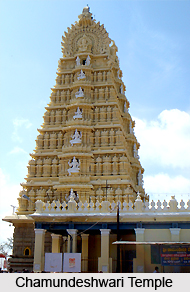 The Lalitha Mahal Palace was designed by E. W. Fritchley in 1930. It has a pedimented, two-storey centerpiece behind which rises a huge dome. The design has been derived from the St Paul`s Cathedral, London. There are long, attenuated wings of paired Corinthian columns culminating in secondary domed pavilions. The Palace has now been converted into a hotel.
The Lalitha Mahal Palace was designed by E. W. Fritchley in 1930. It has a pedimented, two-storey centerpiece behind which rises a huge dome. The design has been derived from the St Paul`s Cathedral, London. There are long, attenuated wings of paired Corinthian columns culminating in secondary domed pavilions. The Palace has now been converted into a hotel.
The interior of the Palace has been well preserved, with stained glass, ornamental plasterwork and delightful suites of principal rooms.
The Palace can be approached via a long boulevard. On one side are the attractive lines of the Maharaja`s Bodyguard. On the other are a series of simple Gothic bungalows.
The Government House is a fine example of a European-style house of the period, with extensive verandahs and a small, open, central courtyard. Its construction was begun in 1800 under Colonel Wilks and by 1805 it had been enlarged and completed. It. The Banqueting Hall was added in 1807 to the designs of Captain Thomas Fiott de Havilland, who created the largest room in south India with a roof unsupported by pillars. It is an elegant and tasteful room with Venetian arches to the flanks. The house is well maintained for state guests and retains a marvelous period atmosphere from the days of the Raj. The northern entrance to the estate is marked also by a triumphal gateway. To the east of the long main drive is the old Maidan, used for polo and as a parade ground.
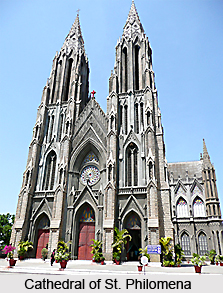 Wellington Lodge lies opposite to the west gate to Government House. It was the residence of the Commissioners of Mysore after the restoration of the Raja in 1799. There is a plaque which testifies to the occupation of the house by the future Duke of Wellington, then Colonel Arthur Wellesley, between 1799 and 1801.
Wellington Lodge lies opposite to the west gate to Government House. It was the residence of the Commissioners of Mysore after the restoration of the Raja in 1799. There is a plaque which testifies to the occupation of the house by the future Duke of Wellington, then Colonel Arthur Wellesley, between 1799 and 1801.
Religious Monuments in Mysore
Chamundi Hills can be reached by 13 km road or by climbing up the 1,000 steps laid out by the Mysore Maharaja in the 17th century. Halfway up the hill is a 4.8 meter monolith of Nandi, Shiva`s bull. It has been hewn out of a single block of basalt in 1659.At the top is a Temple of the Goddess Chamundeshwari, the patron goddess of the Wodeyars. There is also a huge statue of the demon Mahisasura close to the temple. During the month of November December, the groundnut festival is held at the temple which is attended by hordes of worshippers.
Also at the summit is the Palace Bungalow, a substantial mansion with breathtaking views of the city and countryside. The house embraces the core of a building erected in 1822 by Sir Arthur Cole.
Azam Mosque or Great Mosque (1799) is one of over twenty mosques in the city.
On the south side of Railway Station Road is the Jami Masjid (1830). It was erected by Tipu Sultan in the year 1787.The mosque has an elevated prayer hall and minarets on either side.
The new Cathedral of St Philomena is an imposing example of the Gothic style. The construction started in 1931.However it was consecrated only in 1959. Its two peculiar spires are a local landmark.St.Philomena`s is a beautiful Cathedral harking back to the medieval architectural style. The stained glass works and huge lofty windows make the Church a rather remarkable structure.
St Bartholomew`s (1830-31), the Anglican Church instigated by Francis Lewis, is unprepossessing but historically interesting.
Palaces in Mysore
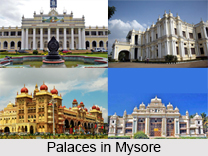 Mysore is renowned as the City of Palaces due to its collection of exquisite palaces, predominantly constructed during the reign of Maharaja Krishnaraja Wodeyar IV. These palaces in Mysore, belonging to the Wodeyar dynasty, bear witness to the creative, architectural, and artistic brilliance of the city`s former rulers. Many of these palaces have been repurposed for various functions and now form an integral part of the government`s heritage properties.
Mysore is renowned as the City of Palaces due to its collection of exquisite palaces, predominantly constructed during the reign of Maharaja Krishnaraja Wodeyar IV. These palaces in Mysore, belonging to the Wodeyar dynasty, bear witness to the creative, architectural, and artistic brilliance of the city`s former rulers. Many of these palaces have been repurposed for various functions and now form an integral part of the government`s heritage properties.
Palaces in Mysore are replete with miniature paintings, glass works and the colourful sculpture that is a dominant feature royal culture and lifestyle. Some of the famous palaces of Mysore are Jaganmohan Palace, Jayalakshmi Vilas Mansion, Lalitha Mahal, and Mysore Palace.
Jaganmohan Palace
Jaganmohan Palace is a palace in Mysore. It was called the Princely City of Mysore, India. The construction of Jaganmohan Palace was completed in 1861 and was initially used by the Wodeyars, kings of Mysore as their home (when the present majestic Mysore Palace that is Amba Vilas Palace, was under construction after the old palace turned into ashes owing to a fire accident). It is now converted into an art gallery and a function hall. The palace is one of the seven palaces of the royal city of Mysore and one of the most beautiful contributions of the Wodeyar Kings of the city during their regime. The royal family has innumerable contributions not only to Mysore but also to some of the most important present metropolitans like Bengaluru
Jayalakshmi Vilas
Jayalakshmi Vilas is a building in Mysore of Karnataka. It is located in the green surroundings of Manasagangothri, the campus of the University of Mysore. It rises on a hillock on the west side of Kukkarahalli Kere (lake). Jayalakshmi Vilas Mansion houses a museum of priceless collections of artefacts. The Karnataka government classifies it as a heritage structure.
Lalitha Mahal
Lalitha Mahal is the second largest palace in Mysore. It is located near the Chamundi Hills, east of the city of Mysore in the Indian state of Karnataka. The palace was built in 1921 at the orders of His Highness Krishnaraja Wodeyar IV, the Maharaja of Mysore for the exclusive stay of the then Viceroy of India. Lalitha Mahal was built on a raising ground. The palace was fashioned on the lines of St. Paul"s Cathedral in London and is one of the imposing structures of the Mysore city.
Mysore Palace
Mysore Palace is a historical palace in the city of Mysore in Karnataka. It is the official residence and seat of the Wodeyars, the Maharajas of Mysore, the royal family of Mysore, who ruled the princely state from 1399 to 1950. The palace houses two durbar halls (ceremonial meeting halls of the royal court) and incorporates a mesmerizing and gigantic array of courtyards, gardens, and buildings. The palace is in the central region of inner Mysore, facing the Chamundi Hills eastward.
Rajendra Vilas
Rajendra Vilas palace is located on top of Chamundi Hills, at an elevation of nearly 1,000 feet. An older building existed at the location that dated back to 1822, which was used as a summer palace by the Wodeyars of Mysore. Maharaja Krishnaraja Wodeyar IV was taught philosophy and English in this building. The conception of a much larger building was initiated in the 1920s. The palace was commissioned by Krishnaraja Wodeyar IV, and was completed in 1938-39. However, its plans were down-scaled due to financial issues. The building of Rajendra Vilas was not constructed as elaborately as planned.
Chittaranjan Palace
Constructed in 1916 by the esteemed Maharaja of Mysore as a residence for his sister, the Chittaranjan Palace has since undergone a remarkable transformation and is now widely recognized as the Green Hotel, a pioneering establishment that operates entirely on solar energy. The Chittaranjan Palace, a relatively lesser-known gem among the palaces in Mysore, was originally a property of the Mysore royal family. Subsequently, the palace was sold to a local family in Mysore, who ingeniously repurposed it as the headquarters for a prominent film company called "Premier Studios." This historic location served as the backdrop for numerous notable film productions and television series, including the renowned TV serial, "The Sword of Tipu Sultan."
Cheluvamba Mansion
Cheluvamba Mansion, situated in the city of Mysore, Karnataka, was commissioned by Maharaja Krishnaraja Wodeyar IV for the esteemed third princess of Mysore, Cheluvajammanni. This mansion bears resemblance to the other grand mansions constructed by the Wadiyar dynasty, characterized by their expansive layouts and picturesque gardens. The mansion currently serves as the esteemed residence for the nation`s premier research institute, the Central Food Technological Research Institute (CFTRI). The CFTRI has diligently preserved the mansion since its formal handover by Prime Minister Jawaharlal Nehru in December 1948, and its official inauguration took place on the 21st of October 1950.
Temples in Mysore
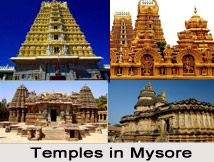 This charming city, renowned through the ages, was the capital of the Mysore rulers. The sprawling and beautiful palace, the lovely Chamundi Hills, Sri Krishnaraja Sagar and Brindavan Gardens are all great delight to the tourists who step into this magic city, still exuding old-world charm. Mysore is 140 km from Bangalore. It is easily accessible from here.
This charming city, renowned through the ages, was the capital of the Mysore rulers. The sprawling and beautiful palace, the lovely Chamundi Hills, Sri Krishnaraja Sagar and Brindavan Gardens are all great delight to the tourists who step into this magic city, still exuding old-world charm. Mysore is 140 km from Bangalore. It is easily accessible from here.
Chamundi Hills : The shrine of Goddess Chamundeshwari commands a panoramic view of Mysore city on the plains below. Sri Chamundi is the tutelary Goddess of the Wodeyar kings, who lavished lots of gifts to the temple. The gopuram was constructed by Krishnaraja Wodeyar.
The Goddess is worshipped as Mahishasuramardhini. There is a life size statue of demon Mahishasura, whom the goddess vanquished at this holy spot. Shrines dedicated to Shiva as Mahabaleshwar and Vishnu as Lakshmi Narayana are situated near the Chamundi Temple.
Navaratri is an important festival that is celebrated in a spectacular manner. The grand Vijayadashami procession marks a colourful finale in a royal way.
Nandi: This giant monolithic sculpture, about 5 metres high and 7.6 metres long, was consecrated during the reign of Dodda Devaraja. Known for excellent workmanship, this Nandi is equal in importance to those at the temples of Thanjavur and Lepakshi.
Deva Ganga and Pathala Vahini are sacred waters on the hills.
Shrines in Mysore Palace: The Lingam at the ancient shrine of Thrineeswara is said to have been installed by sage Thrina Bindu. The Goddess is Tripura Sundari. There are other shrines dedicated to Varahaswami, Bhuvaneswari, Goddess Gayatri and Lord Krishna.
Markandeya Ashram and Jwalamukhi Tripurasundari shrine are other holy spots that are worth visiting.
